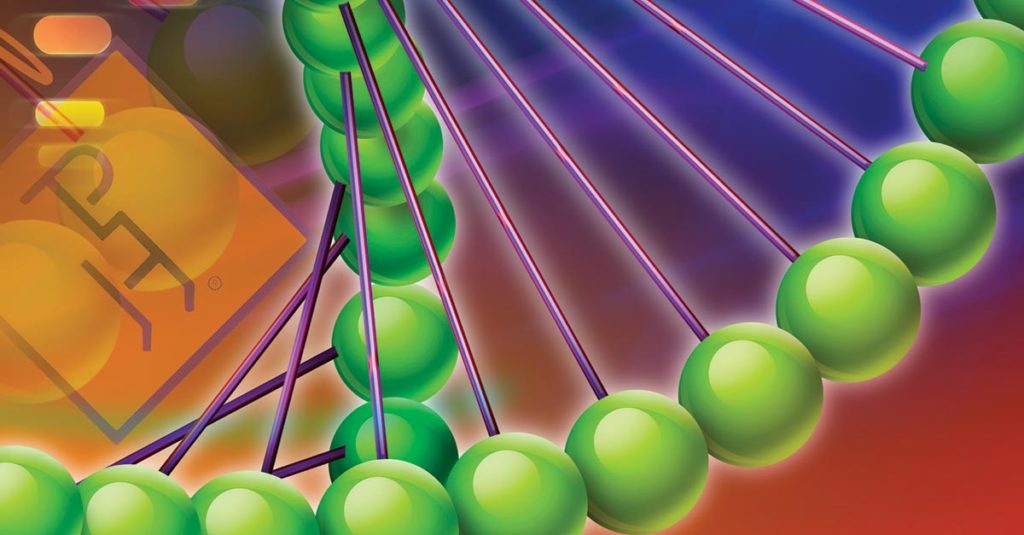University of Florida works with APHA to learn more about Paints from the inside out.
 Working in conjunction with the University of Florida Brooks Genetics Laboratory—directed by APHA member Dr. Samantha Brooks, Ph.D.—APHA is working to gain greater understanding of the genetics that help make Paint Horses unique. One way we’re working toward that goal is by providing research information regarding genotypes, phenotypes and registration classification to Samantha and her University of Florida research team to study the genetics behind Paint patterns, average distribution rates of white markings based on genomics and the likelihood a horse might qualify for Regular Registry status based on his or her genetic makeup.
Working in conjunction with the University of Florida Brooks Genetics Laboratory—directed by APHA member Dr. Samantha Brooks, Ph.D.—APHA is working to gain greater understanding of the genetics that help make Paint Horses unique. One way we’re working toward that goal is by providing research information regarding genotypes, phenotypes and registration classification to Samantha and her University of Florida research team to study the genetics behind Paint patterns, average distribution rates of white markings based on genomics and the likelihood a horse might qualify for Regular Registry status based on his or her genetic makeup.
In the January 2018 Paint Horse Journal, Samantha updated the data she’s previously presented at the annual APHA Convention and explained how it will provide a roadmap to future analysis. Highlights are below; be sure to catch Samantha’s presentation at the 2018 APHA Convention on March 4 in Irving, Texas.
Total horses analyzed as of November 2017 (press time): 431
Genotypes (genetic makeup for pattern genes)
27 genetic combinations are represented in the current research pool; they range from no genes present, to single copies of pattern genes like Frame Overo or Sabino 1, to homozygous individuals, to those carrying multiple pattern genes.
The greater number of spotting alleles present in a horse, the more likely that horse will be classified as a Regular Registry individual:
- 0 spotting genes present: 8 Regular Registry v. 56 solid Paint-breds
- These Regular Registry horses might have “lucky spots” resulting from favorable stocking/face markings or incomplete melanocyte migration during development that create white spots meeting APHA’s registration guidelines without a specific pattern gene as the root cause.
- 1 spotting gene present: 147 Regular Registry v. 37 solid Paint-breds
- 2 spotting genes present: 141 Regular Registry v. 6 solid Paint-breds
- 3 spotting genes present: 30 Regular Registry v. 0 solid Paint-breds
- 4 spotting genes present: 1 Regular Registry v. 0 solid Paint-breds
Colorful Potential
Of the study’s 99 Solid Paint-Bred Registry horses, nearly half of them carried at least one Paint pattern gene.
“Recognizing the value in solid Paints is an important concept,” Samantha said. “Of the solid Paint-breds, almost half of them have a valuable spotting allele. Half of your solid Paint-breds have value as breeding stock based on their spotting patterns alone, not taking into consideration things like conformation, performance or popular pedigrees. Solid Paint-bred does not necessarily mean no spotting genes.”
The Road Ahead
APHA will continue to provide additional research samples to Samantha for continued study. Three horses from the original data set have inspired the search for a new spotting pattern—they each have extensive white markings but test negative for the known pattern genes. Identifying the genetics behind rabicano—an extensive roaning-type pattern—is also in the works.
Further initiatives that could stem from this information might include a digital application or program designed to help breeders predict the likelihood of getting a Regular Registry foal based on the genotypes of the sire and dam. A spin-off project might include research into a computer-based photo analysis system that helps classify horses’ registry type for associations like APHA or creation of registration rules by APHA directors that consider a horse’s genetic makeup more completely to determine registry status.
“The quality and pattern of a foal is only determined by the DNA passed to that foal from the dam and the sire,” Samantha said. “By examining the DNA directly, breeders will be able to accurately gauge the value of their breeding stock. Genetic tools give breeders the power to optimize their breeding plans in order to maximize color and quality, leading to better profitability in the end.”
Read the full story “400 & Counting” in the January 2018 Paint Horse Journal, or as the freebie story in our exclusive “Inside Look” digital edition. Subscribe to the Paint Horse Journal at apha.com/phj/subscribe.
About APHA
The American Paint Horse Association is the world’s second-largest international equine breed association, registering more than a million horses in 59 nations and territories since it was founded. APHA promotes, preserves and provides meaningful experiences with Paint Horses.



You must be logged in to post a comment Login